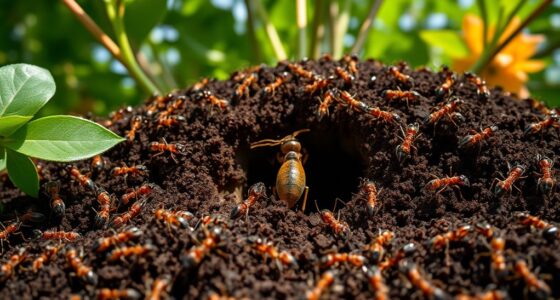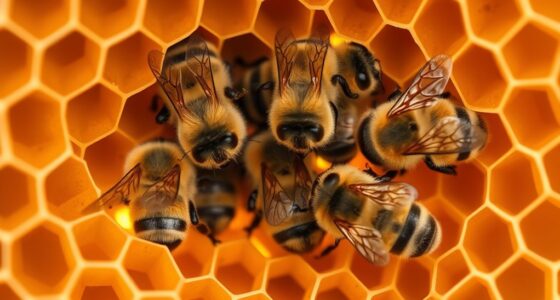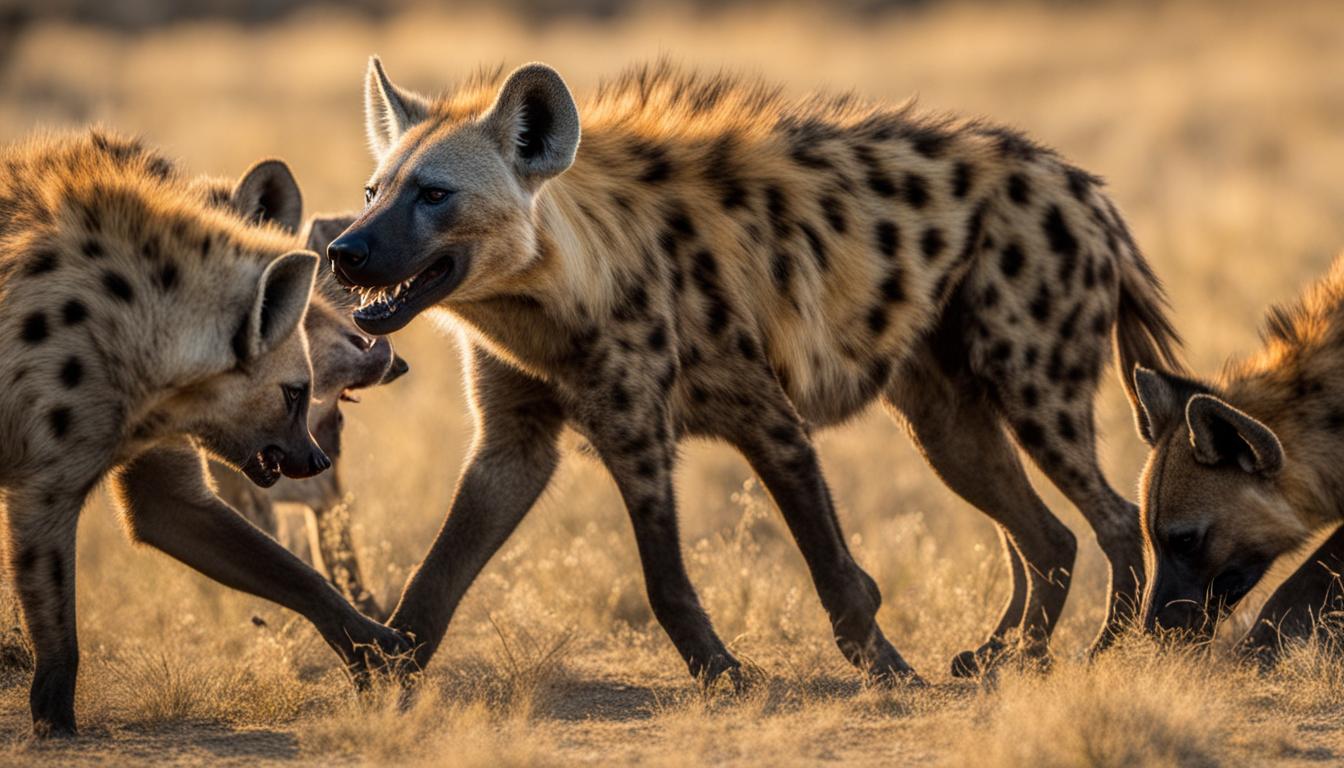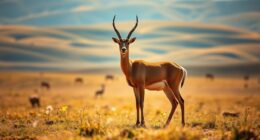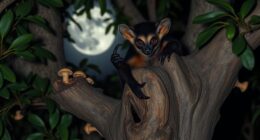Animal migration patterns are fascinating journeys that various species undertake to find food and breeding grounds. You'll notice that birds like the Arctic tern travel vast distances, guided by the sun and Earth's magnetic field. Monarch butterflies commence on a long trek from Canada to Mexico, relying on environmental cues. However, climate change and habitat loss threaten these migrations. Discovering these intricate details can reveal even more about the wonders of migration in the animal kingdom.
Key Takeaways
- Animal migration is driven by seasonal changes, primarily for food and breeding, with species like Arctic terns traveling vast distances annually.
- Navigational skills vary among species, with birds using celestial cues, magnetic fields, and topography, while salmon rely on their sense of smell.
- Environmental changes, such as climate change and habitat loss, disrupt migration patterns, affecting timing and success of migratory species.
- Migratory species face challenges like urban development and invasive species that alter habitats, complicating their migrational routes.
- Conservation efforts are essential to protect migration routes and habitats, ensuring the survival of migratory species like monarch butterflies and humpback whales.
Understanding Animal Migration
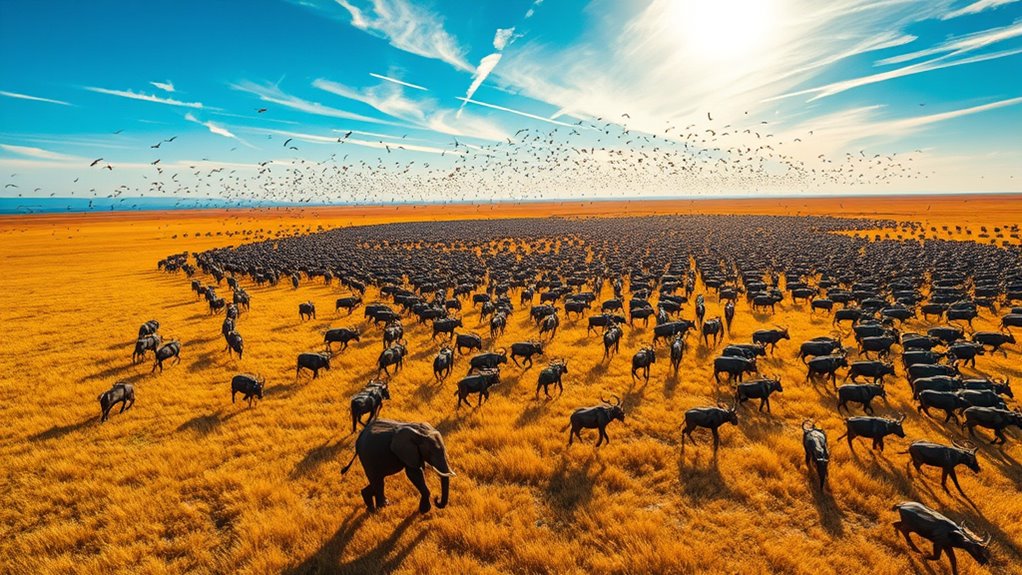
When you think about animal migration, you might envision vast flocks of birds soaring across the sky or butterflies fluttering thousands of miles. Understanding animal migration involves recognizing that it's a regular, seasonal movement driven by the need for essential resources like food and breeding grounds.
Species like the Arctic tern illustrate remarkable migration patterns, traveling around 40,000 kilometers annually. Birds navigate using celestial cues and Earth's magnetic fields, showcasing fascinating animal behavior.
However, environmental changes, such as climate variability and habitat loss, can disrupt these patterns, affecting timing and success. By studying these migrations, you gain insight into the intricate connections between species and their habitats, emphasizing the importance of preserving these natural routes.
The Journey of the Monarch Butterfly

As the temperatures drop in the fall, millions of monarch butterflies commence on a remarkable journey, traveling approximately 4,800 kilometers (3,000 miles) from their breeding grounds in Canada to the warm wintering sites in Mexico.
This incredible migration isn't completed by a single butterfly; it takes three to five generations of monarchs to follow the established migration routes. Along the way, female monarchs lay eggs on milkweed plants, vital for their larvae's development.
While traversing, these butterflies rely on environmental cues like the Earth's magnetic field and the sun's position.
Sadly, the population of monarch butterflies is declining due to habitat loss and climate change, making conservation efforts essential for their survival and the continuation of this awe-inspiring journey.
Navigational Skills of Migratory Species

Traversing vast distances, migratory species employ a mix of remarkable skills that allow them to find their way across challenging landscapes.
For instance, the Arctic tern uses celestial cues, Earth's magnetic field, and topographical features to navigate its long journeys.
Monarch butterflies rely on the sun's position and possibly the magnetic field to migrate up to 4,800 kilometers from Canada to Mexico.
Birds like the bar-headed goose adapt to fly over the Himalayas, reaching altitudes over 8,000 meters.
Bats utilize echolocation to detect obstacles and locate food during migrations.
Meanwhile, salmon navigate upstream, returning to their natal rivers for spawning, using their keen sense of smell.
These navigational skills are essential for successful animal migrations.
Environmental Influences on Migration

When you think about animal migration, consider how climate change affects their journeys.
Changes in temperature and rainfall can disrupt food availability and breeding grounds, forcing animals to adapt their timing.
Habitat loss from human activities also complicates their routes, making migration even more challenging.
Climate Change Impacts
Climate change considerably impacts animal migration patterns by altering temperature and precipitation, which in turn affects food availability and breeding grounds for migratory species.
You might notice several key effects:
- Mismatched phenology, where migration timing doesn't align with resource availability.
- Monarch butterflies face threats from habitat loss and climate variability.
- Warming temperatures may lead to earlier arrivals at breeding grounds.
- Disruption of traditional migrational routes due to changing habitats.
- Conservation efforts become essential to protect vital migration pathways.
These shifts in migratory patterns due to climate change challenge the survival of many species, making it fundamental for you to understand and support conservation initiatives that safeguard their routes and habitats.
Habitat Availability Changes
Changes in habitat availability greatly influence animal migration patterns, especially as species adapt to shifting environmental conditions. Climate change leads to alterations in temperature and precipitation, disrupting traditional migratory routes. This affects the timing and success of migration for many species, including the monarch butterfly. Additionally, habitat loss and fragmentation from human activities create barriers, hindering natural movement and decreasing populations. Conservation efforts to preserve critical habitats play an essential role in mitigating these impacts.
| Factor | Impact on Migration | Example Species |
|---|---|---|
| Climate Change | Disrupts routes | Monarch Butterfly |
| Habitat Loss | Creates barriers | Arctic Tern |
| Conservation Efforts | Preserves routes | Salmon |
Food Resource Fluctuations
Food resource fluctuations play an essential role in shaping migratory behaviors among animals, as they often depend on seasonal availability to survive.
When resources dwindle, animals migrate to seek out sustenance. Here are some key factors that influence this dynamic:
- Seasonal temperature changes affect food growth.
- Wildebeests follow grass growth cycles in the Serengeti-Mara.
- Monarch butterflies rely on milkweed availability for larvae.
- Salmon migrate upstream to spawn where food is plentiful.
- Climate change can misalign migration timing with food peaks.
As you can see, food resource fluctuations are vital.
When conditions shift, animals migrate to guarantee their survival and reproductive success, highlighting the intricate connection between environment and migration.
The Role of Migration in Ecosystems

While many might overlook animal migration as simply a seasonal event, it plays an important role in maintaining the balance of ecosystems. Migratory animals, like the monarch butterfly and Arctic tern, facilitate seed dispersal and nutrient cycling, which are essential for healthy habitats.
During their journeys, species such as bar-headed geese help transport energy and nutrients, contributing to ecosystem stability. By connecting different ecosystems, these migratory patterns enhance biodiversity and impact various food webs.
The survival of many plants and animals relies on the movements of these migratory species, emphasizing the need to preserve their routes. Recognizing the role of migration in ecosystem balance helps us appreciate the intricate connections within nature.
Challenges Faced by Migratory Animals
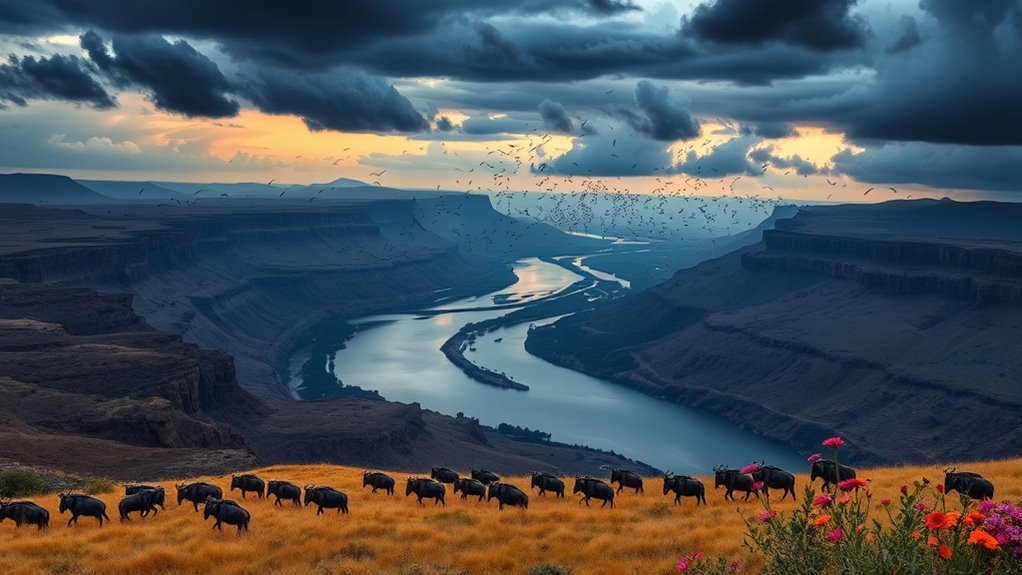
As you explore the journey of migratory animals, you'll notice they face numerous challenges along the way.
Navigational obstacles like roads and buildings disrupt their paths, while habitat loss limits their resources.
Additionally, the threat of predators adds another layer of danger during their treks to find food and safety.
Navigational Obstacles Encountered
Migratory animals encounter numerous navigational obstacles that can greatly disrupt their journeys. These challenges arise from various factors, making their migrations more perilous:
- Physical barriers like roads and buildings hinder natural movement patterns.
- Urban development and agricultural expansion lead to habitat loss and fragmentation.
- Environmental changes, including climate change, affect resource availability and migrational timing.
- Increased predation risks arise as animals navigate areas with predators like lions and hyenas.
- Invasive species alter habitats and compete for resources, complicating migratory routes.
These navigational hurdles can greatly impact the success of migratory journeys, forcing animals to adapt or face dire consequences.
Understanding these obstacles is essential for protecting migratory species and their vital pathways.
Habitat Loss Impact
Navigational obstacles greatly impact the journeys of migratory animals, but habitat loss amplifies these challenges. As urban development and agriculture expand, critical habitats disappear, disrupting traditional migrational routes.
This loss makes it tough for you to find food, shelter, and breeding grounds during your travels. Physical barriers like roads and buildings hinder your natural movement patterns, increasing the risk of accidents.
Species such as Monarch butterflies are particularly affected by climate variability and habitat destruction, leading to declining populations and altered migration patterns.
To support the survival of migratory animals like you, addressing habitat-related challenges is vital. Promoting resilience and adaptability amid changing environmental conditions guarantees a brighter future for migratory species.
Predation Risks During Migration
While traveling long distances, you face significant predation risks that can threaten your survival. As a migratory animal, you encounter various challenges along your journey:
- Predators like lions and hyenas target large herds, increasing your vulnerability.
- Humpback whales, despite their size, risk attacks from natural predators and human activities.
- Salmon swim against strong currents, making them easy targets for bears, birds, and other fish.
- Many migratory birds, including monarch butterflies, use camouflage and flocking to evade predators.
- Migration patterns create predictable opportunities for predators, heightening risks during specific seasons.
Navigating these threats is essential for your survival as you commence on your migratory journey. Understanding these predation risks can help you adapt and thrive.
The Impact of Climate Change on Migration Patterns

As climate change reshapes our environment, animal migration patterns are being greatly altered. You're likely to notice that many migratory birds are arriving at their breeding grounds earlier due to warmer temperatures. This shift can create a disconnect with food sources that haven't yet become available.
Monarch butterflies, too, face challenges from habitat loss and climate variability during migration, impacting their survival rates. Additionally, changes in ocean temperatures and currents affect marine species like salmon and humpback whales, forcing them to seek new breeding and feeding grounds.
Research shows that these altered migration timings can reduce fitness in populations, ultimately leading to declines in migratory species and disrupting the balance of ecosystems.
Conservation Efforts for Migratory Species

Conservation efforts for migratory species are essential in the face of habitat loss and climate change, which threaten their survival.
To effectively support these species, consider the following strategies:
- Protect key habitats along migration paths.
- Implement policies to reduce pesticide use.
- Restore milkweed populations for Monarch Butterflies.
- Foster international collaborations, like the North American Monarch Conservation Plan.
- Engage local communities in conservation initiatives.
Fascinating Migration Stories From the Animal Kingdom
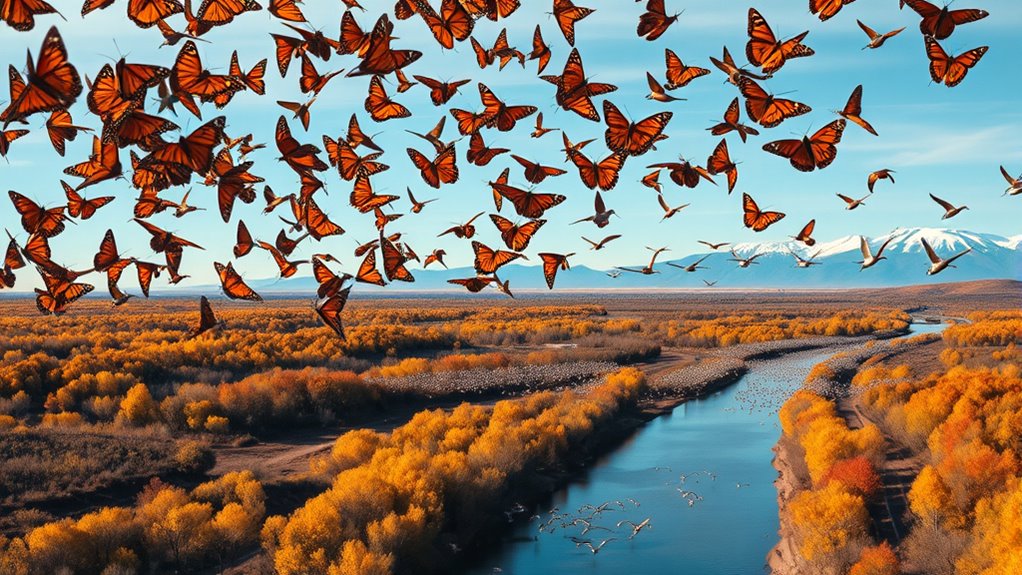
Protecting migratory species is just one part of appreciating the incredible journeys many animals undertake.
Take the monarch butterfly, for example; it travels about 4,800 kilometers (3,000 miles) from Canada to Mexico, skillfully maneuvering using the Earth's magnetic field and the sun's position.
The monarch butterfly embarks on a remarkable 4,800-kilometer journey from Canada to Mexico, navigating with precision.
Then there's the Arctic tern, which holds the record for the longest migration, covering an astounding 40,000 kilometers (25,000 miles) annually between the Arctic and Antarctic.
Humpback whales migrate over 8,000 kilometers (4,970 miles), relying on fat reserves during their journey.
Wildebeests, or gnus, move in massive herds, seeking fresh grass in the Serengeti.
Finally, Pacific salmon swim up to 400 kilometers (250 miles) against strong currents to spawn in their birthplace.
Each of these incredible animal migrations tells a unique story.
The Future of Animal Migration and Biodiversity

While many migratory species have adapted to their environments over millennia, the future of animal migration faces unprecedented challenges due to climate change and habitat loss.
These factors disrupt the delicate patterns of animals, leading to significant consequences for biodiversity.
Here's what you need to know:
- Climate change alters food availability, affecting population stability.
- Habitat loss disrupts migratory routes and breeding grounds.
- Timing shifts can impact breeding success for species like the Arctic tern.
- Conservation efforts are essential for preserving migratory corridors.
- Understanding ecosystem interconnections is critical for maintaining balance.
As you reflect on the animal kingdom, consider how our actions can support these incredible journeys and help sustain biodiversity for future generations.
Frequently Asked Questions
What Are Animal Migration Patterns?
Animal migration patterns are the seasonal movements of species from one area to another, usually driven by the search for food, breeding grounds, or favorable climates.
You might notice how some birds fly south for winter while others head north in spring. These journeys can cover vast distances, like the Arctic tern's annual trek or the monarch butterfly's migration.
Changes in the environment can disrupt these patterns, affecting the survival of many species.
What Animal Makes the Most Dramatic Migration in the World?
The animal that makes the most dramatic migration in the world is the Arctic tern.
You'd be amazed to learn that it travels around 40,000 kilometers (25,000 miles) each year between its Arctic breeding grounds and Antarctic feeding areas.
This journey showcases its remarkable endurance and navigational skills, as it uses the Earth's magnetic field and seasonal changes to find its way back home.
It's an incredible demonstration of nature's wonders!
How Do Animals Know Where to Go When They Migrate?
Finding their way like a seasoned traveler, animals use various cues to discover their migration routes. They rely on Earth's magnetic field, the sun's position, and even stars to guide them.
Some, like birds, inherit routes refined over generations, while others, such as bats, use visual landmarks. These creatures adapt their behaviors to exploit environmental signals, ensuring they reach their breeding and wintering grounds efficiently.
It's a remarkable blend of instinct and learned guidance!
What Are Some Interesting Facts About Animal Migration?
Animal migration is fascinating! Did you know the Arctic tern travels an incredible 40,000 kilometers annually?
Monarch butterflies journey about 4,800 kilometers, often spanning generations.
Humpback whales migrate over 8,000 kilometers, relying on fat reserves during their trip.
Wildebeest form massive herds of over a million, seeking fresh grass in the Serengeti.
And bar-headed geese fly at astonishing altitudes over the Himalayas, showcasing their incredible adaptability to extreme environments.
Isn't nature amazing?
Conclusion
As you reflect on the wonders of animal migration, imagine a grand dance of nature, where each creature moves gracefully to a rhythm dictated by instinct and the seasons. This intricate ballet not only sustains ecosystems but also showcases the resilience of life amidst changing climates. By nurturing habitats and supporting conservation efforts, you can help guarantee that these remarkable journeys continue, allowing the vibrant tapestry of biodiversity to thrive for generations to come.




